A tenet of developmentally appropriate practice is establishing and nurturing a sense of community in your classroom or setting. This sense of community should encompass your relationships with the children, their families and caregivers, and with your colleagues.
In a NAEYC blog post on creating community in the early childhood classroom, teacher Kate Kane wrote, "Strong communities have members who have shared goals and experiences, who feel empowered to contribute, who trust in one another, and who feel understood and capable as individuals." Community, she declares, should be co-created; teachers and children should work together to define the covenants of their classroom and schools. When community is co-created, children take ownership of the role they play in it. Promote community is your preschool setting by implementing one or more of the following activities at the start of the school year.
Suggested Activities:
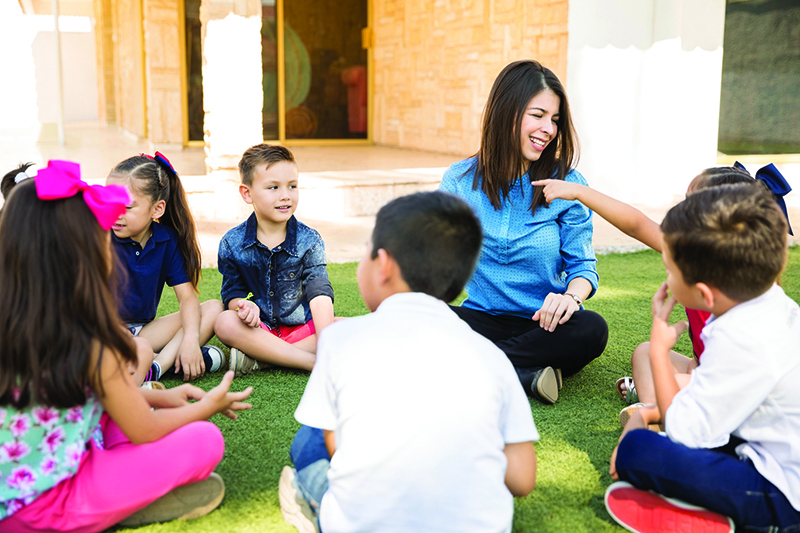 Write rules together.
Write rules together. 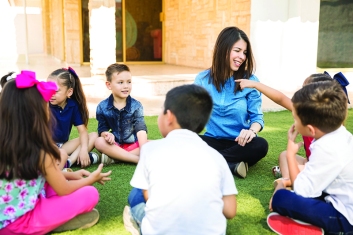 It is widely recommended that educators not just review rules with children, but take time to write them together. On your first day or during your first week together, dedicate a circle time to talking about expectations in your setting. Invite children to talk about rules and expectations that are important to them. Read and discuss books like My Hands Were Made for Helping and Kindness Starts With You - At School by Jacquelyn Stagg. Consider putting a spin on traditional rules. You might ask that children "Discover" or "Celebrate learning." Think about the feeling you'd like the children to go home with each day.
It is widely recommended that educators not just review rules with children, but take time to write them together. On your first day or during your first week together, dedicate a circle time to talking about expectations in your setting. Invite children to talk about rules and expectations that are important to them. Read and discuss books like My Hands Were Made for Helping and Kindness Starts With You - At School by Jacquelyn Stagg. Consider putting a spin on traditional rules. You might ask that children "Discover" or "Celebrate learning." Think about the feeling you'd like the children to go home with each day.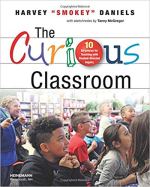 Set up a Wonder Wall. Though originally intended to support teachers engaging in inquiry-led learning in school-age settings (see The Curious Classroom by Harvey Daniels), a Wonder Wall can be easily adapted to meet the needs of preschool educators. Set up an area in your classroom or hallway where you post children's questions about a specific topic. You can invite children to ask questions about a theme you're exploring or anything about which they want to learn. This can be as simple as attaching sticky notes to a bulletin board with the child's name and question. Review the board often and use it to tailor lessons, choose books, etc. Periodically, ask each child if her question has been answered. Update the Wonder Wall as you see fit.
Set up a Wonder Wall. Though originally intended to support teachers engaging in inquiry-led learning in school-age settings (see The Curious Classroom by Harvey Daniels), a Wonder Wall can be easily adapted to meet the needs of preschool educators. Set up an area in your classroom or hallway where you post children's questions about a specific topic. You can invite children to ask questions about a theme you're exploring or anything about which they want to learn. This can be as simple as attaching sticky notes to a bulletin board with the child's name and question. Review the board often and use it to tailor lessons, choose books, etc. Periodically, ask each child if her question has been answered. Update the Wonder Wall as you see fit.- Collect data. It goes without saying that data plays an important role in our everyday lives. We use it in our classrooms when we collect observations and document and assess the children's learning. Consider using data occasionally to understand children's interests and moods, as well as those of their family members and caregivers. Start the year by creating a simple chart where you ask children how they are feeling about the new year. Label the columns with feelings. Offer each child a sticker (you can use plain dot stickers or even stickers that convey the emotions you've listed) and have him place it in the column of his choice. Revisit the chart after a week or so. Remake it and have children vote again. Talk about how their feelings changed. You can even set up a similar graph for parents as a family engagement tool. Their responses will help you understand how to tailor discussions about your setting and/or feedback in your newsletters. Consider revising this chart quarterly to assess how feelings are changing and growing.
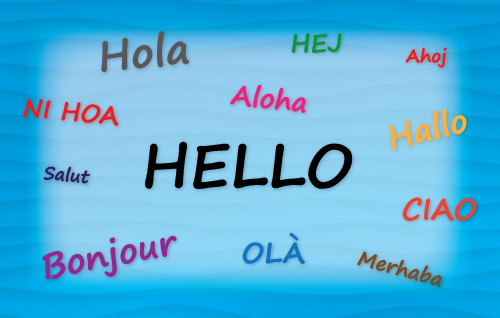 Honor all languages with a Hello Banner. Our curriculum offers words in Spanish and American Sign Language in its curriculum, however, we recognize that the children in your setting may come from homes where many other languages are spoken. Begin the year by creating a simple Hello Banner that features the word hello in other languages spoken in your setting. Reach out to families ahead of time and ask about words they use for greetings, or visit your local librarian for assistance.
Honor all languages with a Hello Banner. Our curriculum offers words in Spanish and American Sign Language in its curriculum, however, we recognize that the children in your setting may come from homes where many other languages are spoken. Begin the year by creating a simple Hello Banner that features the word hello in other languages spoken in your setting. Reach out to families ahead of time and ask about words they use for greetings, or visit your local librarian for assistance.- Make your Birthday Board a "Birth Story Board." It's tradition in the preschool classroom to set up a birthday board that displays each child's name and birth date. Use your birthday board as a tool for parent engagement by inviting families and caregivers to write a few words about each child's birth and including a baby photo. Knowing each child's birth story will help you know more about each child's family dynamics. If you have children in your setting for whom sharing their birth stories may be a sensitive subject, create a "Birthday Wishes Board," where families and caregivers write down a wish they have for each child and post that along with a birthday wish each child expresses.
 Share your story.
Share your story.  Children are curious about the adults in their lives. When implementing new activities, think about ways to share experiences with subjects or tell personal stories when they're relevant. For example, write down your own questions on the Wonder Wall, participate in the survey about how everyone is feeling on the first day of school, and include your birthday on the Birthday Board. When you visit with children about classroom rules, explain why you think certain ones are important. Make content meaningful by sharing a piece of yourself.
Children are curious about the adults in their lives. When implementing new activities, think about ways to share experiences with subjects or tell personal stories when they're relevant. For example, write down your own questions on the Wonder Wall, participate in the survey about how everyone is feeling on the first day of school, and include your birthday on the Birthday Board. When you visit with children about classroom rules, explain why you think certain ones are important. Make content meaningful by sharing a piece of yourself.
Books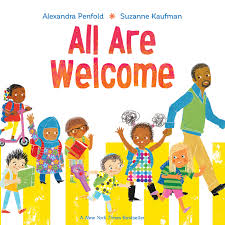
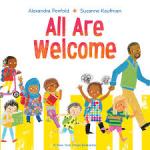
- All Are Welcome by Alexandra Penfold
- The Good Egg by Jory John
- Alma and How She Got Her Name by Juana Martinez-Neal
- Where Are You From? / ¿De dónde eres? by Yamile Saied Méndez
- Enemy Pie by Derek Munson
- My Hands Were Made for Helping and Kindness Starts With You - At School by Jacquelyn Stagg
- Another by Christian Robinson
- All Kinds of Friends and All Kinds of People by Shelley Rotner
Songs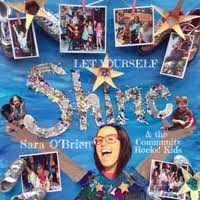

- "Let Yourself Shine!" and "Taking Turns and Sharing" by Sara O'Brien & The Community Rocks! Kids
- "You'll Sing a Song and I'll Sing a Song" and "Names" by Ella Jenkins
- "Everyone" and "School Days" by Elizabeth Mitchell
- "Let's Play" by Raffi
- "Love Me for Who I Am" by Brady Rymer and the Little Band That Could
- "Community" and "The Leader in Me" by Kira Willey
Always preview books and songs to ensure they align with the needs and values of your group.